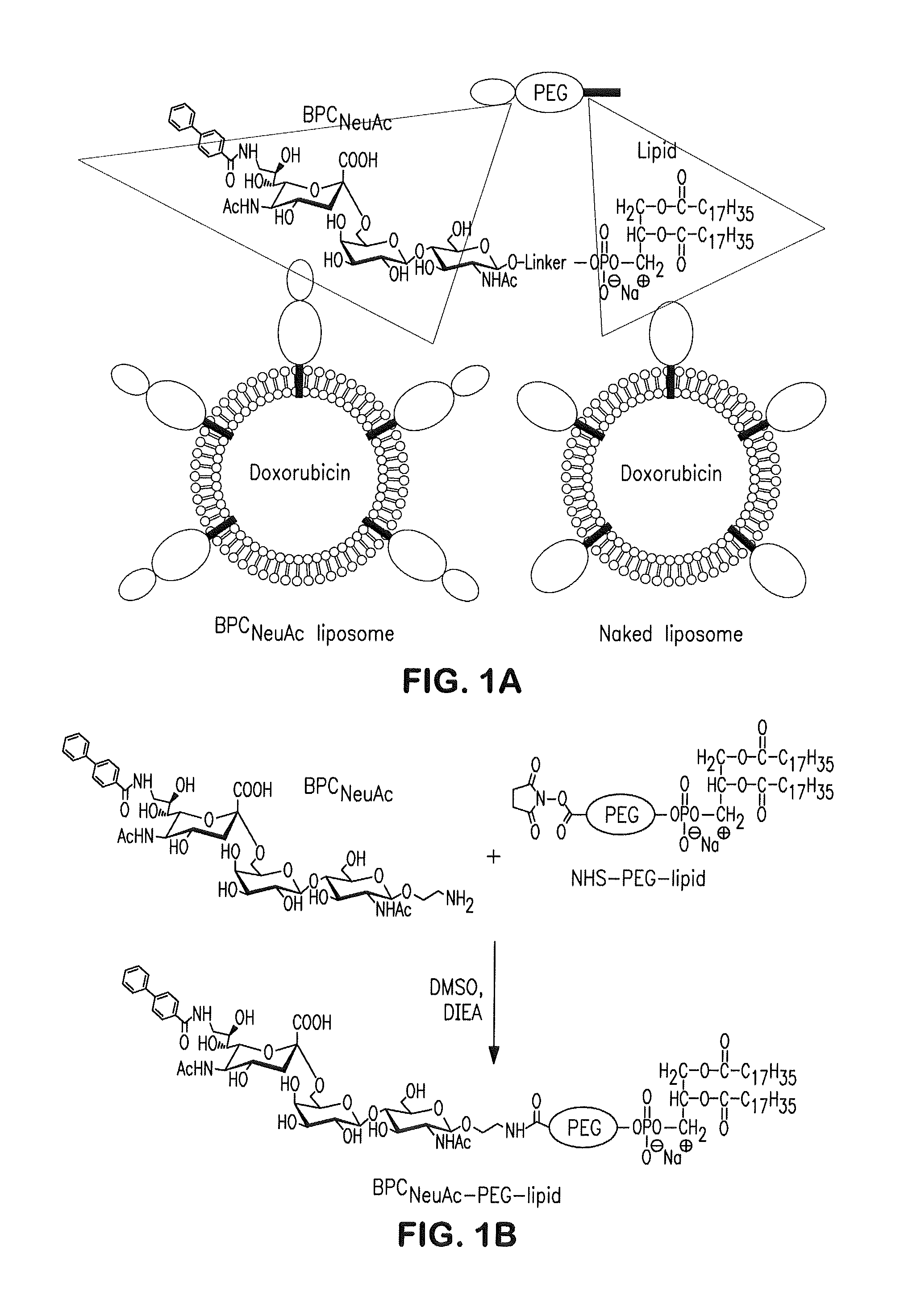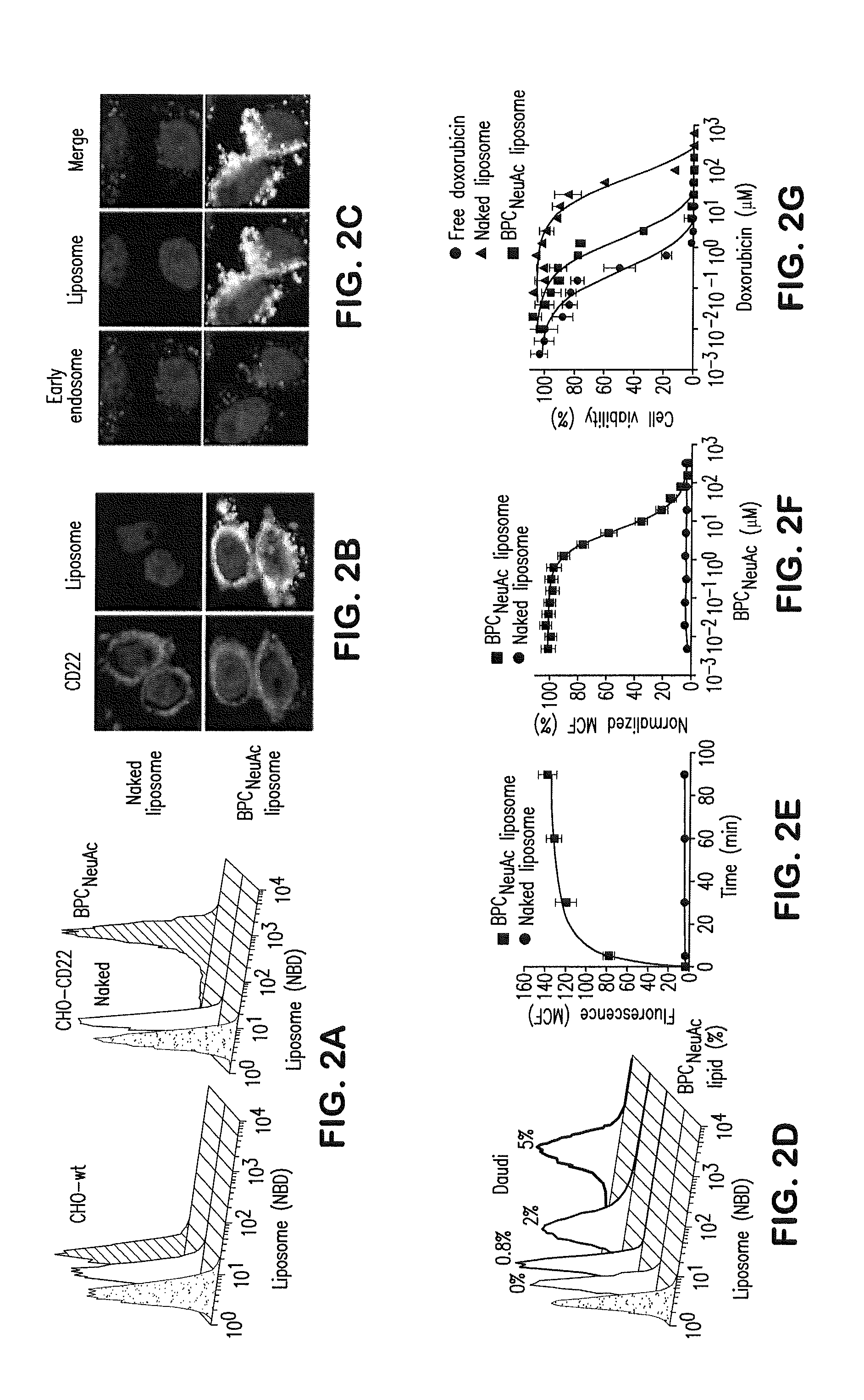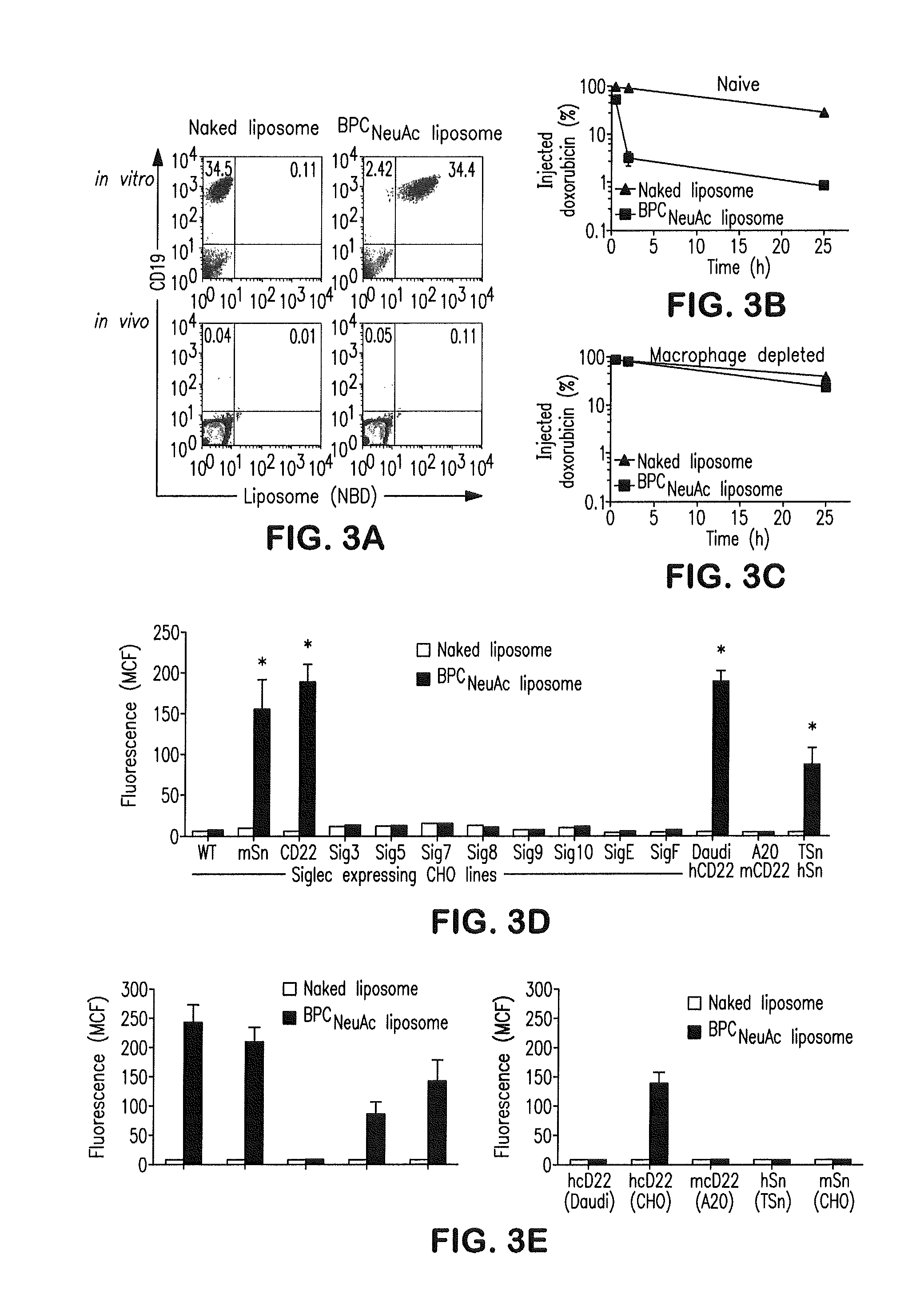Liposome targeting compounds and related uses
a technology of liposomes and targeting compounds, which is applied in the direction of antibody medical ingredients, peptide/protein ingredients, drug compositions, etc., can solve the problems of reducing selectivity, not providing a therapeutic index that is proportional to the promise of the cell type, and low expression levels on other cell types
- Summary
- Abstract
- Description
- Claims
- Application Information
AI Technical Summary
Benefits of technology
Problems solved by technology
Method used
Image
Examples
example 1
Materials and Methods
[0072]Preparation of liposomes: The protocols are described for preparing BPCNeuAc liposomes. Liposomes bearing other glycan ligands can be similarly prepared. Distearoyl phosphatidylcholine (DSPC), cholesterol (chol), nitrobenzoxadiazol-phosphoethanolamine (NBD-PE), and polyethyleneglycol-distearoyl phosphoethanolamine (PEG-DSPE) were purchased from Avanti Polar Lipids and NOF Corporation. BPCNeuAc-PEG-DSPE was prepared by coupling 9-N-biphenylcarboxyl-NeuAcα2-6Galβ1-4GlcNAc (6′-BPCNeuAc) sialosides with an ethylamine linker to N-hydroxysuccinimide (NHS)-activated pegylated lipids (NOF Corporation). Nontargeted naked liposomes were composed of DSPC:Chol:PEG-DSPE in a 60:35:5 molar ratio. CD22-targeting BPCNeuAc liposomes substituted BPCNeuAc-PEG-DSPE for PEG-DSPE on a mol-for-mol basis. For preparation of liposomes, lipids dissolved in chloroform and dimethyl sulfoxide were mixed and lyophilized for 16 hours. The lipid flakes were hydrated in the cell culture-g...
example 2
In Vivo Targeting of B-Cell Lymphoma with CD22-Targeting Liposomes
[0081]CD22-targeting liposomes are bound to and internalized by CD22-expressing cells: To prepare CD22-targeting liposomes, we coupled a high-affinity glycan ligand of CD22, biphenylcarboxyl-NeuAcα2-6Galβ1-4GlcNAc (BPCNeuAc or 6′-BPCNeuAc), to a commercially available NHS-activated pegylated lipid, and the corresponding BPCNeuAc-pegylated lipid was then incorporated into a liposomal doxorubicin formulation (FIG. 1 A-B) analogous to that in current clinical use. Fluorescently labeled BPCNeuAc liposomes bound robustly to CD22-expressing but not wild-type CHO cells, whereas the nontargeted “naked” liposomes exhibited no binding to either (FIG. 2A). Fluorescence microscopy shows staining of CD22-expressing cells only by BPCNeuAc liposomes (FIG. 2B), with diffuse staining of the cell surface, and punctate staining consistent with internalization by endocytosis, as evidenced by costaining with markers of early endosomes (an...
example 3
Liposomes for Targeting and Delivering Antigens to APCs
[0090]This Example describes liposomal nanoparticles bearing glycan ligands of Siglecs for targeting and / or delivering antigens to antigen presenting cells (APCs) including macrophages, dendritic cells and B cells. In these studies, incorporation of antigens into the liposomal targeting compositions allows active targeting of antigen presenting cells, resulting in an immune response with robust activation of T cells or NKT cells depending on the antigen delivered. Specifically, we demonstrated (1) targeting in vitro and in vivo macrophages with antigen that is processed for presentation and activation of CD4+ and CD8+ T cells, (2) targeting in vitro and in vivo macrophages with lipid linked antigen that is processed for presentation and activation of NKT cells, and 3) targeting in vitro dendritic cells with protein antigen that is processed for presentation and activation of T cells.
[0091]In these studies, we employed liposomal ...
PUM
| Property | Measurement | Unit |
|---|---|---|
| size | aaaaa | aaaaa |
| size | aaaaa | aaaaa |
| pore sizes | aaaaa | aaaaa |
Abstract
Description
Claims
Application Information
 Login to View More
Login to View More - R&D
- Intellectual Property
- Life Sciences
- Materials
- Tech Scout
- Unparalleled Data Quality
- Higher Quality Content
- 60% Fewer Hallucinations
Browse by: Latest US Patents, China's latest patents, Technical Efficacy Thesaurus, Application Domain, Technology Topic, Popular Technical Reports.
© 2025 PatSnap. All rights reserved.Legal|Privacy policy|Modern Slavery Act Transparency Statement|Sitemap|About US| Contact US: help@patsnap.com



